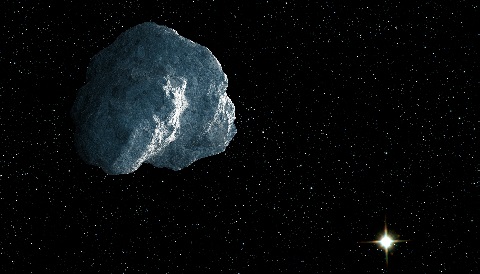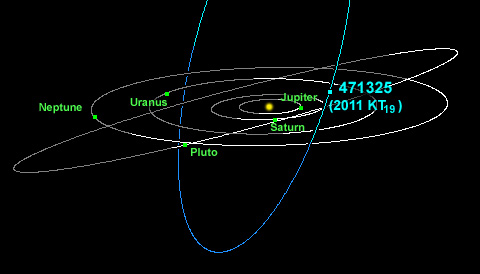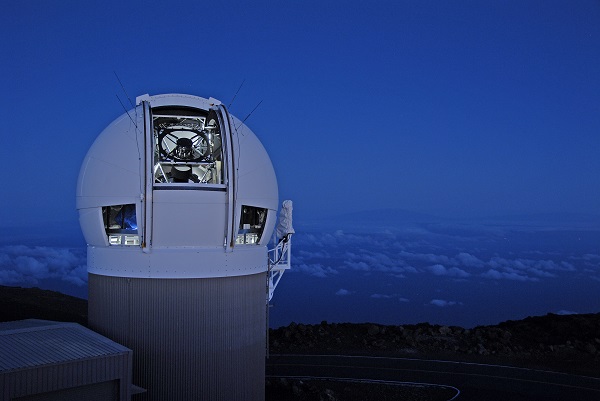The discovery of trans-Neptunian object 2011 KT19 in a strange orbit deepens a key mystery in the outer solar system.

NASA /ESA / G. Bacon (STScl)
This isn't your parents solar system — or even the tidy one you memorized in primary school. In addition to the classic, orderly inner and outer planets, you can now add a bewildering menagerie of Trojans, Centaurs, Kuiper Belt objects, and more.
As a case in point, a recent discovery could hint at a distinct new class of high-inclination Centaurs lurking in the distant solar system. "Centaurs" are objects whose orbits cross those of one or more outer planets. They generally lie this side of the Kuiper belt but beyond Jupiter.
The object in question is 2011 KT19, which has now been assigned the number 471325 by the IAU's Minor Planet Center. Observers with the Mount Lemmon Catalina Sky Survey first spotted it in 2011. Then it turned up again last year in images taken with the PanSTARRS 1 telescope in Hawai'i, and a team led by Ying-Tung Chen (Academia Sinica, Taiwan) derived the object's orbit and announced its findings this month.

NASA / JPL
And what a strange new world this is. It currently shines at a faint apparent magnitude of 22 in the constellation Serpens Caput, near its border with Libra. Based on reasonable guesses for its albedo (surface reflectivity), 2011 KT19 should be 70 to 200 km in diameter. Even on the high end of this range, the tiny world is only one-sixth the diameter of Pluto's large moon Charon.
But it's the bizarre orbit of 2011 KT19 that gives astronomers pause: perihelion (reached in 1999) is 23.8 astronomical units from the Sun, aphelion is 47.4 a.u., and one orbit takes some 212 years to complete. This takes it inside the orbit of Neptune, and out to just inside the aphelion of Pluto. The inclination of 2011 KT19's orbit to the ecliptic is a whopping 110°, meaning that it orbits the Sun in a slow retrograde orbit — one moving "backward" with respect to the motion of the major planets. Chen nicknamed this contrarian object "Niku," a Chinese adjective meaning "rebellious."

Ying-Tung Chen
“We identified Niku in our searches for outer solar system objects in the PanSTARRS1 data,” says collaborator Matthew Holman (Harvard-Center for Astrophysics). “After we reported our observations to the Minor Planet Center, they were linked to 2011 KT19, which had been observed over a span of just 8 days, not long enough to recognize its unusual orbit.”
Followup observations were carried out by the Lulin Observatory in Taiwan, and archived observations were taken from the Canada-France-Hawaii Telescope (CFHT) observatory and the Dark Energy Camera based at the Cerro Tololo Inter-American Observatory in Chile.
Rebellious Rocks
Just one other trans-Neptunian object is known to have a retrograde orbit: 2008 KV42, (informally named "Drac," for Count Dracula) follows a path inclined 103° relative to the ecliptic. These two objects — along with four other small Centaur asteroids in prograde orbits — share a common orbital plane. Moreover, the two retrograde objects have nearly identical ascending nodes, as do the four prograde objects. After looking at one million orbital simulations, Chen's team concludes that the likelihood of getting all six objects in the same orbital plane is 1 in 6,250 (0.016%).
“The most interesting thing is that there appears to be a group of objects like Niku that share the same orbital plane, roughly perpendicular to the plane of the solar system,” says Holman. “Even stranger, some of the objects are prograde and some are retrograde.”
The team notes that this coincidental alignment isn't stable — the simulations show that natural orbital precession should scatter such objects over just a few million years, a relatively short span of time in the history of the solar system. At this point, just what sort of mechanism is keeping these high inclination orbits in the same common plane isn't known.
Chen's team notes that the "Planet Nine" simulations run by Caltech astronomers Mike Brown and Konstantin Batygin yield an X-shaped cluster of high-inclination objects in two common orbital planes, though neither are coincident with the observed orbits of these high inclination TNOs.
The object hypothesized by Brown and Batygin should have 2 to 4 Earth masses but occupy a much more distant orbit with an estimated semimajor axis of around 700 a.u. This kind of distant, massive perturber can't exert enough gravitational influence to confine the six orbits of 2011 KT19 and its ilk. And a big, massive "something" closer in would stir up trouble in the Kuiper Belt.

Rob Ratowski / PS1SC
"The orbit is what's truly exciting about this new body," Batygin said in a recent PRI Science Friday interview. “We don't really have a mechanism to explain these types of orbits.”
Do more renegade TNOs exist? Are these captured asteroids from a more distant reservoir of Kuiper Belt objects? Successor surveys, such as Large Synoptic Survey Telescope (LSST) set to go online in 2019 mightreveal if Niku, Drac and friends have any company in the outer solar system — and just what might be maintaining their common orbits.
It's a brave new solar system indeed, one that doesn't always want to conform with last year's textbooks.
 0
0









Comments
You must be logged in to post a comment.